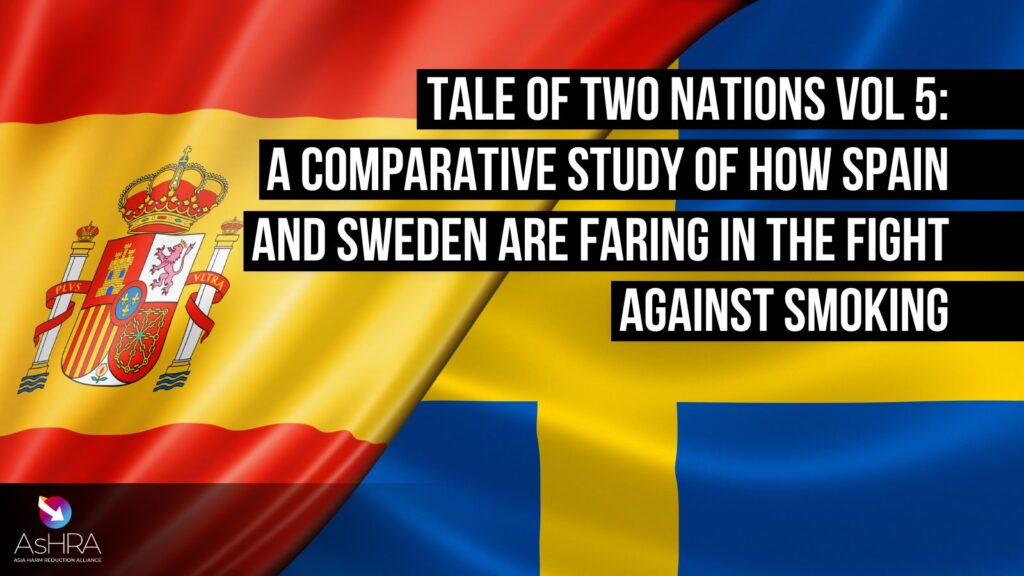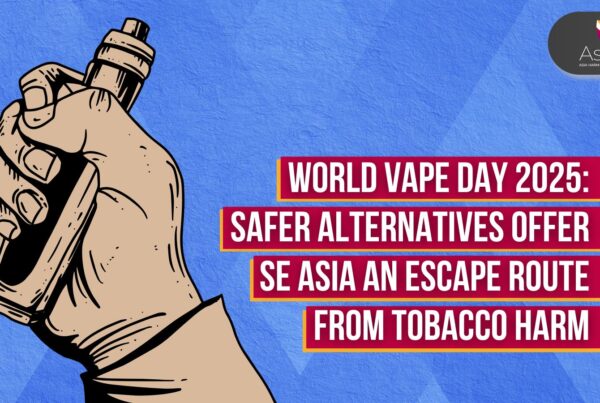Australia’s restrictive vaping policies, black market booms and rise in youth use
A recent report on New Zealand celebrates this nation’s success in adopting harm reduction policies and strategies – and the subsequent drastic reduction of smoking rates. However, its neighbour, Australia, is not doing as well. In this article, Dr. Colin Mendelsohn, an Australian physician, highlights how Australia’s divergent policy of restricting harm reduction alternatives, such as vapes, has resulted in many unwanted consequences.
The Prescription Model and Its Shortcomings:
In the realm of tobacco control and smoking cessation, the regulatory frameworks in Australia and New Zealand present stark contrasts. Dr. Mendelsohn shares how Australia adopts a highly restrictive approach, classifying nicotine liquid as a medicine – with the government often citing youth use as the justification for such measures. To vape legally, individuals must be at least 18 years old, possess a doctor’s prescription, and purchase e-liquids and vaping devices exclusively from pharmacies.

This prescription model for vaping has proven ineffective. Dr. Mendelsohn highlights that “vapers do not regard themselves as sick and don’t see the need to get a prescription especially when cigarettes are readily available everywhere.” He shows that this has led to two common scenarios, both unwanted.
Firstly, some vapers have switched back to smoking rather than remaining on their journey of harm reduction and towards cessation. Secondly, vapers have either stockpiled supplies or obtained them illegally.
The Black Market Boom:
Dr. Mendelsohn shares concerns that over 90% of adult vapers do not have a nicotine prescription and use other, illegal means to continue vaping. This is due to a myriad of reasons, including the difficulty of obtaining a prescription, limited stocks in pharmacies and legal limitations on the range of devices and flavours available.
Instead, Dr. Mendelsohn worries that many obtain vaping products from a growing and prospering black market which, by nature, is unregulated and untaxed. He shares how this underground network is mostly run by criminal gangs that bring in 120 million disposables annually and sell both online and in retail shops. Therefore, instead of curbing a public health concern, Australia’s restrictive policies have only raised new ones.
A Justifiable Restriction?
After seeing the major unwanted consequences brought on by Australia’s vaping restrictions, it becomes very difficult to justify the government’s choices. The policies prove even more ineffective when considering that the cited aim of reducing youth vaping has not been achieved. In fact, Dr Mendelsohn clarifies that the ease of access to black market products has led to higher vaping rates among young people, with one in six 12-17-year-olds reported to have vaped in the last month alone. This means that many youth are being forced to turn to unregulated products – with no guarantee of product safety or standard adherence.
In conclusion, while Australia’s stringent vaping regulations aim to protect public health, they have inadvertently fostered a thriving black market and increased youth access to unsafe products. It is time that the Australian government, perhaps inspired by their neighbour’s success, strongly rethink its cessation strategy and vaping policies.
Related Posts
 Time to support Filipino vape law, not relitigate it
Time to support Filipino vape law, not relitigate it
Time to support Filipino vape law, not relitigate it
 Greens’ Plan To Legalise Nicotine Vapes Lauded
Greens’ Plan To Legalise Nicotine Vapes Lauded
Greens’ Plan To Legalise Nicotine Vapes Lauded
 Taiwan Vaping Ban Disappointing For Its Many Smokers
Taiwan Vaping Ban Disappointing For Its Many Smokers
Taiwan Vaping Ban Disappointing For Its Many Smokers
More about
Alcohol Harm Reduction
More about





